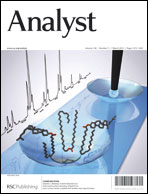We describe a novel and simple mechanism for inducing ion concentration polarization (ICP) using a surface-patterned perm-selective nanoporous film like Nafion in single, open microchannels. Such a surface-patterned Nafion film can rapidly transport only cations from the anodic side to the cathodic side through the nanopore clusters so that it is possible to generate an ICP phenomenon near the Nafion film. In this work, we characterize transport phenomena and distributions of ion concentration under various electric fields near the Nafion film and show that single-channel based ICP (SC-ICP) is affected by Nafion film thicknesses, strengths of applied electric fields, and ionic strengths of buffer solutions. We also emphasize that SC-ICP devices have several advantages over previous dual-channel ICP (DC-ICP) devices: easy and simple fabrication processes, inherently leak-tight, simple experimental setup requiring only one pair of electrodes, stable and robust ICP induced rapidly, and low electrical resistances helping to avoid Joule heating, and membrane perm-selectivity breakdown but allowing as high bulk flow as an open, plain microchannel. As an example of applications, we demonstrate that SC-ICP devices not only have high potential in pre-concentrating proteins in massively parallel microchannels but also enable the concentration and lysis of bacterial cells simultaneously and continuously on a chip; therefore, proteins within the cells are extracted, separated from the concentrated cells and then pre-concentrated at a different location that is closer to the Nafion film. Hence, we believe that the SC-ICP devices have higher possibilities of being easily integrated with traditional microfluidic systems for analytical and biotechnological applications.

You have access to this article
 Please wait while we load your content...
Something went wrong. Try again?
Please wait while we load your content...
Something went wrong. Try again?


 Please wait while we load your content...
Please wait while we load your content...